Contents
In the first part, we uncovered some of the patterns we’ve noticed during implementing infrastructure solutions across more than 50 companies.
But those were only half of the lessons. So here’s the continuation of what 50+ infrastructure setups taught us—the rest of the lessons that continue to guide how we design, build, and scale infrastructure for our clients.
Lesson 6: You Don’t Have to Rebuild Your MVP; You Just Have to Design It Like It Might Succeed
Every startup begins with an MVP, and it’s a practical strategy: you start small, gather feedback, and refine your product through each iteration.
The intent behind an MVP is short-term validation. However, in practice, its initial infrastructure often becomes the lasting setup. Each new feature, service, and integration adds weight to an architecture that was only ever meant for early testing.
At first, this setup may perform well. The product grows, the user base expands, revenue begins to rise. But beneath the surface, small cracks appear—slower deployments, downtime during updates, and unpredictable performance issues.
This is often the stage where founders encounter constraints because their infrastructure can no longer keep up with their success. That’s when they turn to us at IT Outposts.
So, what solution can we propose?
A full setup rebuild—creating a more scalable environment. In many cases, we’ve helped clients migrate to Kubernetes, allowing them to focus on product growth instead of scalability issues. It’s a worthwhile step, though it demands extra effort, resources, and time during the transition.
But is there a way to avoid reaching this point in the first place?
Yes, ideally, MVP should be designed with scalability in mind from day one, so it can evolve into a full working product without complex migrations later. Still, when the primary goal is to prove an idea, detailed technical planning rarely comes first due to limited resources and tight timelines, and it’s totally understandable.
That’s why we found a middle ground—a way to stay lean at the start, but keep the door open for growth.
It’s AMIX—a production-ready infrastructure that supports MVPs today and scales effortlessly as real-world demand increases.
Whether your early setup is already holding you back or you’re planning ahead to prevent that from happening, AMIX equips your product with the infrastructure it needs to grow confidently.
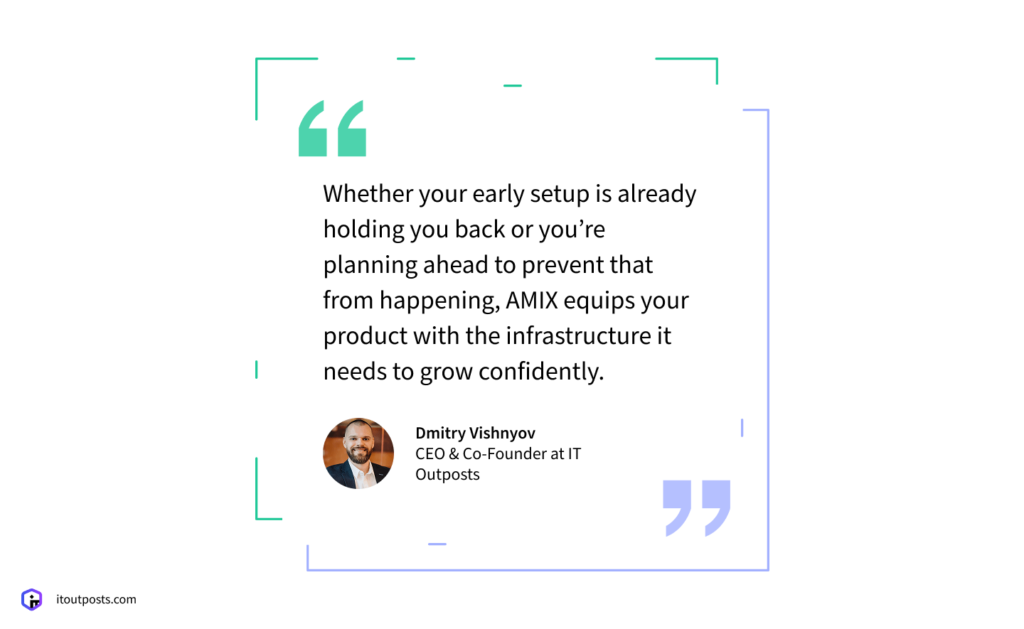
Lesson 7: The Lab Is a Safe Place, but Growth Happens Outside It
The lab is the comfort zone of product development—a place where teams polish features, refactor code, and perfect every release note before anyone ever sees the product.
It’s natural to aim for excellence. Every team wants to perfect their craft, and every founder wants the launch to reflect their vision. Yet, some projects may spend two or three years in closed development. And while this work continues, the world keeps moving.
Trends change, user expectations rise, and competitors move forward. Eventually, the product may no longer align with what the market needs.
Infrastructure, just like the product itself, should evolve in public, as every bit of real traffic lets you understand what works best.
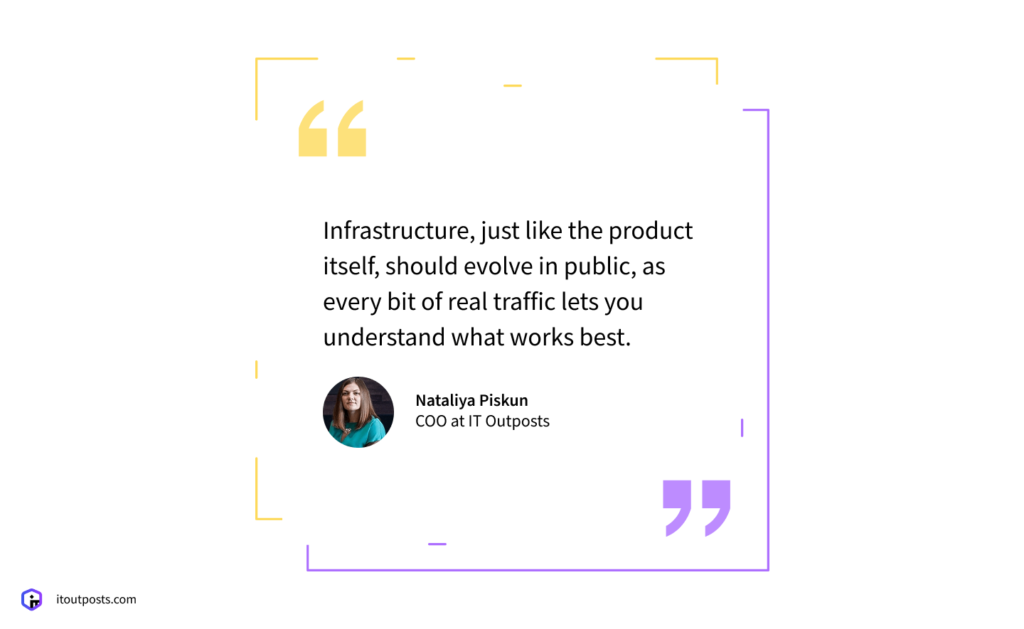
Yes, perfection takes time, but the quickest and most effective way to achieve it is to release what’s ready. In DevOps, every deployment is a lesson, and the faster you learn, the faster you grow.
Lesson 8: Technical Debt Must Remain a Conscious Trade Off
Technical debt may sound like a developer problem—disorganized code, hardcoded credentials, inconsistent environments between testing and production, etc.
It accumulates when teams prioritize speed, skipping documentation and applying quick patches. Each small compromise may feel harmless in the moment. But together, these compromises create a bottleneck that can slow the entire business. So, it becomes a business concern, too.
It’s worth noting, however, that technical debt isn’t always harmful. In some cases, shortcuts can be necessary. For example, when you need to reach the market quickly, you may leave certain parts of the system less refined, knowing they’ll be rebuilt once the product gains traction.
But it should remain a conscious decision, as technical debt’s consequences begin when teams forget these shortcuts exist or never plan to revisit them.
Ignoring technical debt has a cost:
- Development slows down.
- Outages become more frequent.
- Infrastructure costs rise.
That’s why we approach technical debt deliberately, evaluating whether it still serves a purpose or whether it’s time to resolve it.
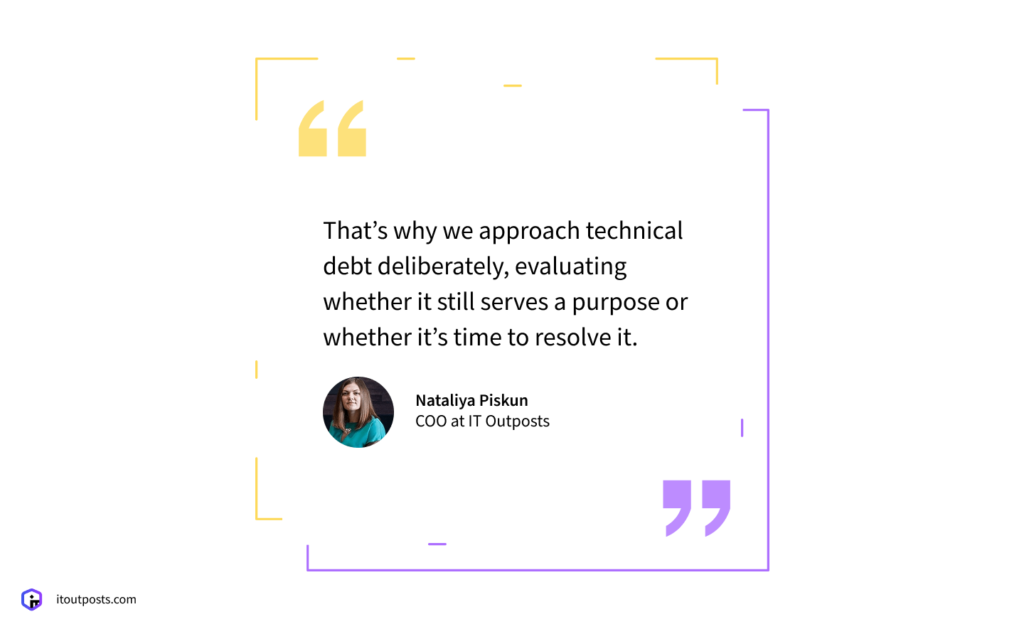
Lesson 9: No Project Is Too Early for Security
Teams naturally prioritize what brings visible results: launching features, improving speed, refining UX. Security, in contrast, addresses potential risks, which may never occur, so it often gets postponed, especially when every resource counts.
Yes, security is a broad concept. There are countless measures you can take, but not every company needs all of them from day one.
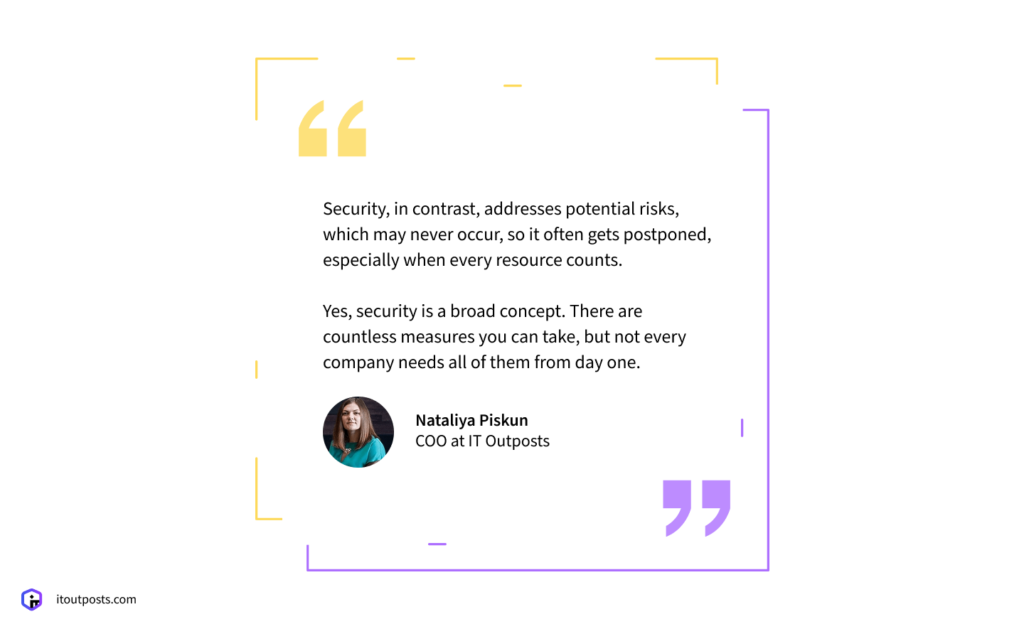
So, we’ve identified a few foundational practices that we recommend to every client:
- Addressing hardcoded credentials. Some teams still keep passwords hard-coded in their repositories or store sensitive data directly in plain text. The problem is, these secrets become visible to anyone with access to the codebase, and this increases the risk of unauthorized access and data leaks. We move sensitive data into secret management systems, where it’s encrypted, versioned, and accessible only through proper authentication.
- Security autotests integrated into CI/CD. Manual checks are slow, inconsistent, and easy to overlook, especially under delivery pressure. By integrating automated security tests directly into the CI/CD pipeline, you can detect vulnerabilities as soon as new code is deployed.
- Penetration testing. A product launches successfully, gains users, and suddenly faces traffic it wasn’t built to handle. Not because the infrastructure malfunctioned on its own, but because someone helped it fail with DDoS attacks. We recommend running penetration tests regularly, especially after major updates or infrastructure changes.
Lesson 10: Disaster Recovery Planning Starts with Two Numbers
In the same way that security fundamentals are essential from day one, it’s never too early to think about disaster recovery. Disaster recovery may sound like a technical problem, but not only systems are at stake. After all, every minute of silence equals lost transactions, frustrated customers, and support lines lighting up. So, it’s not about having disaster recovery but about creating a plan that offers protection without putting pressure on your budget.
So, when we advise on disaster recovery planning, we always start with two numbers:
How much revenue you might lose per hour offline, and how much you’re willing to spend to prevent this loss.
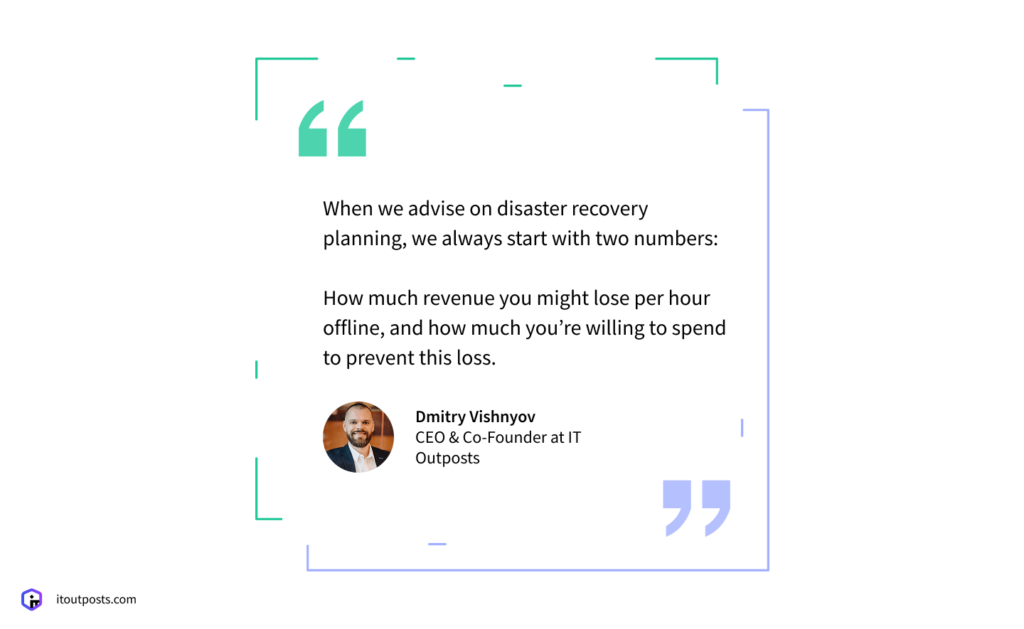
Once you know these numbers, you stop thinking in terms of “perfect uptime” and start thinking in terms of balance between risk, cost, and business continuity.
Production-Ready from the Start: Discover AMIX’s Full Power for Free
These lessons weren’t learned in theory but in practice, often the hard way. Our goal is to help others skip that part.
That’s how we created AMIX, our production-grade infrastructure setup that brings together 20+ proven DevOps tools and best practices in one package.
- It helps startups in the validation stage build on a foundation that’s scalable from day one.
- It saves teams from years of technical debt by providing IaC-based infrastructure with clean documentation, consistent environments, and integrated CI/CD pipelines.
- It helps growing companies that can’t afford security gaps by offering preconfigured tools and automation for resilience, monitoring, and protection.
- And it makes disaster recovery and compliance achievable for any stage, through built-in monitoring and security components aligned with international standards like ISO 27001, SOC 2, and GDPR.
Get free access to AMIX now to discover its full capabilities!

I am an IT professional with over 10 years of experience. My career trajectory is closely tied to strategic business development, sales expansion, and the structuring of marketing strategies.
Throughout my journey, I have successfully executed and applied numerous strategic approaches that have driven business growth and fortified competitive positions. An integral part of my experience lies in effective business process management, which, in turn, facilitated the adept coordination of cross-functional teams and the attainment of remarkable outcomes.
I take pride in my contributions to the IT sector’s advancement and look forward to exchanging experiences and ideas with professionals who share my passion for innovation and success.